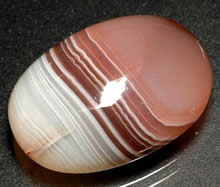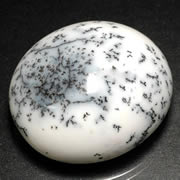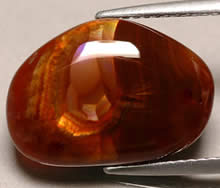Agate Stone
The other type of quartz is known as cryptocrystalline
quartz. It has microscopically (or submicroscopically) small crystals
and is usually translucent to opaque, with a waxy to greasy or dull
luster. This kind of quartz has fibrous and granular subcategories. The
fibrous varieties are known under the name chalcedony, but this name covers a remarkable variety of stones.
The patterns of agate are so distinctive that a number of different varieties are commonly identified in the trade. They include eye agate, which forms ring shapes with a point in the center; dendritic agate, distinguished by its moss-like patterns; and fire agate, with an unusual iridescence. Agate was used as a gemstone by the Egyptians at least 3,000 years ago. In modern times, agate has a special association with the Idar-Oberstein region in Germany. Idar-Oberstein was an important source of agate until the 19th century, and the region was favored with good local sandstone for producing cutting and polishing wheels, and water power to work the wheels.
Today agate continues to be mined in Brazil, but also in Uruguay, India, Australia, China, Madagascar, Mexico, Mongolia and Namibia. |
Tuesday, January 22, 2013
Agate
Subscribe to:
Post Comments (Atom)




0 comments:
Post a Comment